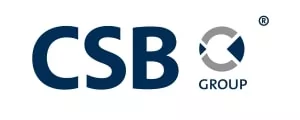An MLRO, or Money Laundering Reporting Officer, is an indispensable figure in the corporate structure, assuming a pivotal role, particularly within sectors vulnerable to the pervasive threats of money laundering and financial crime. The multifaceted significance of an MLRO extends beyond its conventional responsibilities and encompasses a range of critical functions.
1. Legal Compliance and Strategic Safeguarding:
The MLRO stands as the frontline guardian of legal integrity within the business, orchestrating meticulous adherence to anti-money laundering (AML) and counter-terrorist financing (CTF) regulations. Beyond averting legal consequences, this role strategically safeguards the organisation against potential fines and reputational damage, establishing a robust shield against legal pitfalls.
2. Proactive Risk Mitigation:
By formulating and implementing comprehensive AML and CTF policies and procedures, the MLRO operates as a proactive risk mitigator. This approach empowers the business to systematically identify, assess, and mitigate risks associated with money laundering and financial crime, ensuring resilience against potential financial losses and reputational harm.
3. Dynamic Detection Mechanisms:
The MLRO assumes responsibility for the establishment of dynamic mechanisms geared towards the detection of suspicious activities within the business. This proactive stance ensures that any anomalies are swiftly identified, allowing for timely reporting to relevant authorities. Consequently, the MLRO contributes significantly to the collective efforts aimed at combating financial crime.
4. Guardian of Corporate Reputation:
In a landscape where allegations of money laundering can cast a long shadow over a business's reputation, the dedicated presence of an MLRO becomes instrumental. Serving as a testament to the organisation's commitment to ethical business practices and regulatory compliance, the MLRO contributes to the building and maintenance of trust with clients, partners, and stakeholders.
5. Rigorous Client Due Diligence:
The MLRO exercises oversight in the implementation of robust client due diligence processes. This involves not only the verification of client identities but also the comprehensive assessment of the nature of their business and vigilant monitoring of transactions. These measures are indispensable in preventing the inadvertent use of the business for illicit purposes.
6. Cultivating a Culture of Integrity:
Beyond its regulatory functions, the MLRO actively engages in educating and training employees about AML and CTF policies and procedures. This proactive approach cultivates a culture of integrity within the organisation, ensuring that all staff members are not only aware but also vigilant and compliant.
7. Meticulous Regulatory Reporting:
The MLRO shoulders the responsibility for the meticulous preparation and submission of reports to regulatory authorities, as mandated by AML and CTF regulations. This includes the preparation of suspicious activity reports (SARs) and other documentation vital for regulatory compliance, underscoring the business's commitment to transparency and due diligence.
8. Strategic Advisory Contributions:
Operating in an advisory capacity, the MLRO provides invaluable guidance to the business on matters related to money laundering and financial crime. This spans advice on compliance issues, active participation in risk assessments, and recommendations for enhancements to existing AML policies, contributing to the strategic fortification of the organisation.
In summation, the presence of an adequate MLRO is not merely a regulatory necessity; it is a strategic imperative. By ensuring legal compliance, proactively mitigating risks, actively detecting and reporting suspicious activities, managing the corporate reputation, conducting rigorous client due diligence, fostering a culture of integrity, meticulously overseeing regulatory reporting, and contributing strategic advisory insights, the MLRO becomes an integral custodian of governance and sustainability in the dynamic landscape of today's regulatory environment.
The content of this article is intended to provide a general guide to the subject matter. Specialist advice should be sought about your specific circumstances.


